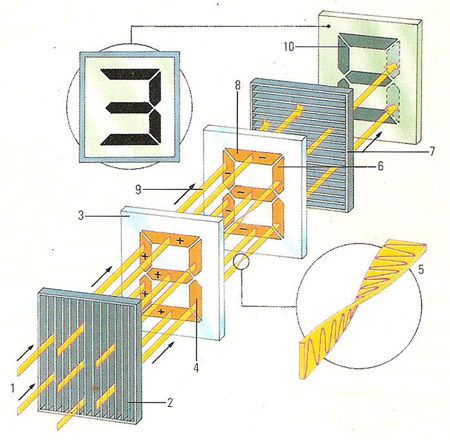liquid crystal display (LCD)

A liquid crystal display (LCD) consists if a liquid crystal sealed between two pieces of glass with a conductive coating. Liquid crystals normally twist light passing through, but a voltage applied between the glass disrupts the order of the molecules, so that the liquid is darkened and forms visible characters. LCDs have been used in watches, calculators, etc.
Liquid crystal displays use the property of liquid crystals to twist the polarization of light to produce numbers or symbols. Incoming light (1) is first regimented in one plane by a polarizer (2) before it passes through the first of two plates of glass (3) on which are fixed electrodes (4). Seven electrodes are needed to represent Arabic numerals. The liquid crystal is between the two plates of glass and twists light (5) passing through uncharged electrodes (6). This light can pass through the second polarizer (7) and can be seen. The light passing through the charged electrodes (8) is not twisted (9), is blocked by the polarizer, and cannot be seen forming the components of the number (10).


